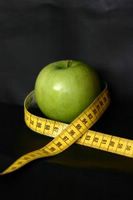Do you know your numbers?

Most people can tell you their height and weight. Using these numbers we can look up the body mass index (BMI) or we can calculate it. Here is a convenient BMI calculator. How is the BMI obtained? The weight in pounds is multiplied by 703 and the answer to that is divided by the height in inches. This will be equivalent to the body mass index in kilograms (kg) per meter (M) squared. In the metric system, it is obtained by taking the weight in kilograms and dividing by the height (in meters) squared, that is (weight)/(height X height). If the number we obtain for the body mass index is 25 or more, it indicates being overweight. If the number is greater than 30, this indicates obesity.
While not every expert is in complete agreement as to whether being overweight or obese is bad for our health - some say that it is really physical fitness that counts - most experts seem to think that being overweight or obese is unhealthy. Obesity is associated with a greater tendency to osteoarthritis (the common kind of arthritis that is associated with wear and tear on the joints, which tends to increase with age). Obesity is also associated with a greater tendency to type 2 diabetes. This is the kind which tends to develop in adults rather than children and tends not to require insulin. Diabetes may be associated with blurring of vision, fatigue, dry mouth, itchy skin, and more importantly hunger, thirst and frequent urination, a number of times a day and especially at night. Also, wound healing may be poor. If sleep is being disrupted because a person has to get up to go to the bathroom at night, diabetes should definitely be considered. A fasting blood glucose (sugar) test, if above normal, would be suspicious for diabetes. Also, the blood sugar will tend to become chemically bound to hemoglobin in red blood cells, producing what is called glycosylated hemoglobin. If a glycosylated hemoglobin test show that this chemical is present in higher than normal levels, it would also favor a diagnosis of diabetes mellitus (sugar diabetes).
If we are overweight, we will of course tend to have a bigger waist. Many of us think that we know our waist measurements. But some of us may be underestimating. The waist size in clothing is deceptive. We can place a belt or button the waist of a garment under our largest area and the belly may hang over. If we feel for the top of the hip bone and place a tape measure around ourselves, we will get a more accurate measure. This should be done with the belly relaxed and at the end of breathing out. In men, a waist circumference of more that 40 inches, and in women of 35 inches is associated with health risks like those mentioned above for obesity. It is good to know our real waist measurement.
The downside of high cholesterol and LDL (bad) cholesterol and low HDL (good) cholesterol have been mentioned in a previous posting. It is good to know these numbers, especially as middle age approaches and beyond.
The problems of high blood pressure were also mentioned in a previous posting. Blood pressure machines in supermarkets and public places tend to be a little inaccurate, but often on the high side. If it is high it should not be ignored. It is best to get the blood pressure measured by a health professional periodically. For a person with high blood pressure, it is best to buy a blood pressure machine to check it from time to time. While the best kind uses a cuff around the arm, a wrist blood pressure monitor may be more practical, if it is checked against a more accurate machine, and it is used to look for trends or big changes. The good thing about wrist monitors is that they are small, and easy to use. It is better to have a lesser machine that is used regularly than a fancy one that is neglected. If is important to know whether or not the blood pressure is normal.
Your heart rate or pulse is also good to know. If it is over 100 beats per minute when you are at rest and have not been exerting yourself, it is too fast. It could indicate anxiety, stress, heart problems, an over active thyroid gland (a gland in the front of the neck under the Adam's apple), or other problems. If it is less than 60 beats per minute and you are not very physically fit, you may want to see your doctor. The resting heart rate will tend to decrease with exercise.
It is good to know your your numbers:
body mass index,
waist circumference,
cholesterol (total, LDL and HDL),
blood pressure,
and heart rate.
If you are overweight or have symptoms diabetes mentioned above you should discuss them with your doctor, who will likely order a fasting blood sugar test.
If the numbers are not good, they can be improved by lifestyle changes in diet, physical activity, getting adequate sleep, and other adjustments. Medications are often necessary, though, and have improved health and quality of life considerably for a very large number of people.





0 Comments:
Post a Comment
<< Home